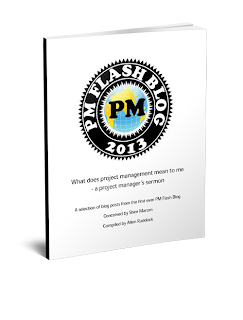The following is borrowed unashamedly from Matthew Squair at Critical Uncertainties:
"Herewith, are the 15 commandments for thine safety critical software as spoken by the machine god unto his prophet Hermann Kopetz.
- Thou shalt regard the system safety case as thy tabernacle of safety and derive thine critical software failure modes and requirements from it.
- Thou shalt adopt a fundamentally safe architecture and define thy fault tolerance hypothesis as part of this. Even unto the definition of fault containment regions, their modes of failure and likelihood.
- Thine fault tolerance shall include start-up operating and shutdown states
- Thine system shall be partitioned to ‘divide and conquer’ the design. Yea such partitioning shall include the precise specification of component interfaces by time and value such that all manner of men shall comprehend them
- Thine project team shall develop a consistent model of time and state for even unto the concept of states and fault recovery by voting is the definition of time important.
- Yea even though thou hast selected a safety architecture pleasing to the lord, yet it is but a house built upon the sand, if no ‘programming in the small’ error detection and fault recovery is provided.
- Thou shall ensure that errors are contained and do not propagate through the system for a error idly propagated to a service interface is displeasing to the lord god of safety and invalidates your righteous claims of independence.
- Thou shall ensure independent channels and components do not have common mode failures for it is said that homogenous redundant channels protect only from random hardware failures neither from the common external cause such as EMI or power loss, nor from the common software design fault.
- Thine voting software shall follow the self-confidence principle for it is said that if the self-confidence principle is observed then a correct FCR will always make the correct decision under the assumption of a single faulty FCR, and only a faulty FCR will make false decisions.
- Thou shall hide and separate thy fault-tolerance mechanisms so that they do not introduce fear, doubt and further design errors unto the developers of the application code.
- Thou shall design your system for diagnosis for it is said that even a righteously designed fault tolerant system my hide such faults from view whereas thy systems maintainers must replace the affected LRU.
- Thine interfaces shall be helpful and forgive the operator his errors neither shall thine system dump the problem in the operators lap without prior warning of impending doom.
- Thine software shall record every single anomaly for your lord god requires that every anomaly observed during operation must be investigated until a root cause is defined
- Though shall mitigate further hazards introduced by your design decisions for better it is that you not program in C++ yet still is it righteous to prevent the dangling of thine pointers and memory leaks
- Though shall develop a consistent fault recovery strategy such that even in the face of violations of your fault hypothesis thine system shall restart and never give up."
Read in the library at Square Peg Consulting about these books I've written
Buy them at any online book retailer!
Read my contribution to the Flashblog

